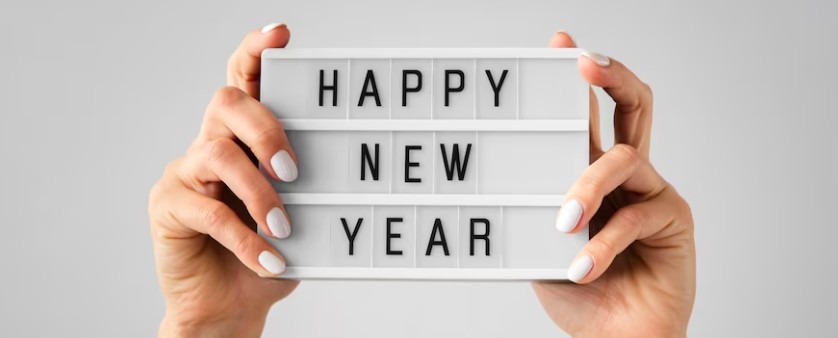
Move Your Mind, Move Your Body

Move Your Mind, Move Your Body
In a world where the pace of life seems to accelerate incessantly, prioritizing mental well-being has never been more crucial. This year's theme is "Movement: Moving More for Our Mental Health." This isn't just about hitting the gym or becoming a marathon runner. It's a call to action to find ways to integrate physical movement into our daily lives, recognizing its profound impact on our mental well-being.
The Science Behind Movement and Mental Wellbeing
The mind and body are intricately connected. Studies have consistently shown that physical activity has a positive impact on mental health. Exercise releases endorphins, natural mood elevators that combat stress and anxiety. It also promotes neurogenesis, the growth of new brain cells, which is crucial for learning and memory, and can even help regulate sleep patterns.
Physical activity isn't just a temporary mood booster. Regular exercise has been shown to be effective in managing various mental health conditions, including depression, anxiety, and ADHD. It can also improve self-esteem, focus, and cognitive function.
Finding Movement in Your Day: It's All About Finding What Works for You
The key message of Mental Health Week is to find moments for movement that fit seamlessly into your life, not add another burden. Here are some ideas to get you started:
- Start small: Begin with short bursts of activity, like a 10-minute walk during your lunch break or a quick dance session to your favorite music. Consistency is key, so aim for small, achievable goals you can build on.
- Incorporate movement into your commute: Walk, bike, or cycle to work whenever possible. If public transport is unavoidable, take the stairs instead of the elevator, or get off a stop early and walk the rest.
- Make chores active: Turn daily tasks into mini-workouts. Put on some music and dance while cleaning, do squats while brushing your teeth, or park further away from your destination and walk.
- Find an activity you enjoy: Explore different types of movement until you find something you truly enjoy. It could be anything from yoga or swimming to dancing, hiking, or gardening. Engaging in activities you find fun is more likely to become a sustainable habit.
- Get active with friends and family: Join a group fitness class, go for a hike with loved ones, or play a sport together. Social interaction combined with physical activity boosts mental well-being on multiple levels.
Finding Movement in the Mundane
Many of us lead sedentary lives, tethered to screens and desks. The good news is, you don't need a gym membership or a marathon schedule to reap the benefits of movement. Here's how to integrate small bursts of activity throughout your day:
- Deskercise: Break up long periods of sitting with simple stretches, arm circles, or chair yoga.
- Walk-and-Talk Meetings: Ditch the conference room and take calls or brainstorm on a walk.
- The Power of the Pomodoro: Use the Pomodoro Technique – work in focused 25-minute bursts punctuated by 5-minute movement breaks.
- Stairway to Heaven (or at least your next floor): Skip the elevator when possible and take the stairs.
- The Commuter Shuffle: Park further away or get off a stop early on public transport to add some walking to your commute.
These small steps add up. Even a few minutes of movement can increase blood flow, improve focus, boost mood, and combat the negative effects of stress.
Creating a Society in Motion
Beyond personal habits, we need to build a society that supports mental well-being. Here are ways to contribute to this shift:
- Normalize Mental Health Conversations: Talk openly about mental health struggles. Share your experiences (with boundaries) and encourage others to do the same.
- Challenge Stigma: Dispel myths surrounding mental illness. Educate yourself and others about the prevalence and manageability of mental health conditions.
- Advocate for Mental Health Resources: Support policies that ensure access to affordable mental healthcare, therapy, and support groups.
- Promote Work-Life Balance: Encourage breaks, flexible work schedules, and company cultures that prioritize mental health alongside productivity.
- Embrace Mental Health Days: Normalize taking time off for mental wellness. Just like a sick day, a mental health day allows for rest, recovery, and self-care.
By working together, we can create a society where seeking help for mental health is seen as proactive, not a sign of weakness.
Communicating for Connection
Open communication is critical for maintaining good mental health. Here are some ways to improve communication for ourselves and those around us:
- Active Listening: Practice attentive listening, focusing on understanding the other person's emotions and experiences.
- Empathy over Judgment: Avoid interrupting and focus on validation, offering support without judgment.
- "I" statements: Use "I" statements to express your feelings and needs without placing blame.
- "How can I help?" Offer concrete support instead of giving unsolicited advice.
- Body Language Matters: Make eye contact, maintain an open posture, and use positive body language to show you're engaged.
Communicating openly about our mental health fosters deeper connections, reduces isolation, and allows us to seek help when needed.
Protecting Our Mental Well-being
Our mental health thrives not just with movement, but also through self-care practices that nurture our well-being. Here are some ways to protect and prioritize our mental well-being:
- Prioritize Sleep: Aim for 7-8 hours of quality sleep each night. Develop a relaxing bedtime routine to ensure restful sleep.
- Nourish Your Body: Eat a balanced diet rich in fruits, vegetables, and whole grains. Minimize processed foods and sugary drinks.
- Hydration is Key: Staying well-hydrated improves mood, focus, and cognitive function. Carry a reusable water bottle and sip throughout the day.
- Digital Detox: Take breaks from screens and social media. Schedule time to disconnect and be present in the moment.
- Connect with Nature: Spend time outdoors in nature. Go for a walk in the park, hike in the woods, or simply sit in your backyard and enjoy the fresh air and sunshine.
Articles
Build your awareness and get inspired with our researched articles on how you can strengthen your well-being
Popular Topics
An OTP has been sent to the email address
provided.
Please check your Inbox and Spam folders.

What Would You Like to Speak with a Specialist About?
Mental Fitness Journey starts Now!
Chearful Connects you with Top-tier Qualified Wellness specialists for the Price of a cup of Coffee!

Next Steps
- A Client Team member will reach out to you to schedule a session with the most suitable specialist.
- You will receive an email with a 10% Discount Code* for your 1st session.
- We invite you to Explore the Platform & Sign Up today! *Upto a maximum of $10 discount on a session purchased




 1562 Read
1562 Read































